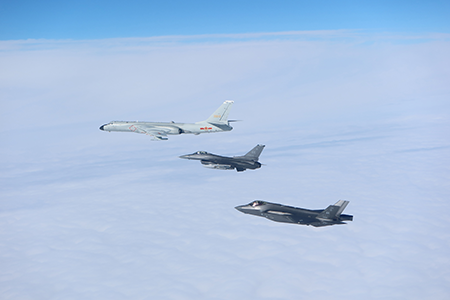“For half a century, ACA has been providing the world … with advocacy, analysis, and awareness on some of the most critical topics of international peace and security, including on how to achieve our common, shared goal of a world free of nuclear weapons.”
Dealing With a China That Will Not Talk
September 2024
By James M. Acton
If states behaved like rational adults, China and the United States would sit down and try to negotiate an agreement to head off their emerging nuclear arms race. Unfortunately, that is not going to happen.

Beijing has made it very clear that it has “no interest” in discussing arms limitations.1 If it changed its mind, it would become immediately apparent how little thought the United States has put into the question of what it would be prepared to give China in return for such limits. Although the next U.S. administration should think through this issue and articulate a vision for a mutually beneficial Chinese-U.S. arms control regime, even talks appear unlikely for the foreseeable future.
Fueled by a growing bipartisan consensus that the United States must augment its nuclear force in response to China’s nuclear buildup and the possibility that Beijing may forge some kind of alliance with Moscow, a Chinese-U.S. arms race now seems virtually certain.2 Indeed, the last legal barrier to this outcome, the limits on long-range nuclear forces imposed by the New Strategic Arms Reduction Treaty (New START), will expire just more than one year into the next president’s term.
Yet, even if averting a new arms race will be extremely difficult, the next president still should try to do that by forcing the bureaucracy to consider its costs seriously. Specifically, the next president should require, as part of the next nuclear posture review, a realistic assessment of the feasibility of effective nuclear “counterforce” operations, the U.S. practice of targeting an opponent’s nuclear forces and command-and-control systems, compared to the alternatives.3
As far as is publicly known, although the Pentagon draws up plans to limit damage to the extent possible, it does not assess whether those plans would meet a presidentially determined threshold for effectiveness. Furthermore, the president should make clear that the alternatives to counterforce targeting should not involve aiming nuclear weapons at civilians. Instead, the United States could exclusively target conventional military forces and war-supporting industry, which have been on the U.S. target list for decades.4
Counterforce targeting is justified primarily as a way to enable the United States to limit the damage it would suffer in a nuclear war. It provides the intellectual ballast for why the United States should build up its nuclear arsenal in response to China; the more nuclear weapons Beijing has, the more Washington needs to destroy them preemptively. Thus, the congressionally mandated 2024 strategic posture commission calls on the Pentagon to modify its nuclear posture to “address the larger number of targets.”5
As part of the next nuclear posture review, the president should require the intelligence community and the Department of State to analyze how China and, for that matter, Russia would respond to a U.S. buildup. Would Beijing simply pursue its existing plans. or would it further augment its force requirements? After all, an arms race, which would be expensive and raise tensions, would be worth running only if it actually ended up increasing the security of the United States.
If China can ensure that U.S. counterforce attacks would not limit meaningfully the damage that the United States would suffer in a nuclear war, arms racing would be an exercise in pure futility. The next president should want to know what kind of arms race the country will be running before the spending bill that begins it is placed on the Resolute Desk.
ENDNOTES
1. Ministry of Foreign Affairs of the People’s Republic of China, “Department of Arms Control and Disarmament Holds Briefing for International Arms Control and Disarmament Issues,” July 8, 2020, https://web.archive.org/web/20211014015131/https:/www.fmprc.gov.cn/mfa_eng/wjbxw/t1795979.shtml.
2. Congressional Commission on the Strategic Posture of the United States, “America’s Strategic Posture,” October 2023, https://www.ida.org/-/media/feature/publications/a/am/americas-strategic-posture/strategic-posture-commission-report.ashx.
3. Charles L. Glaser, James M. Acton, and Steve Fetter, “The U.S. Nuclear Arsenal Can Deter Both China and Russia: Why America Doesn’t Need More Missiles,” Foreign Affairs, October 5, 2023, https://www.foreignaffairs.com/united-states/us-nuclear-arsenal-can-deter-both-china-and-russia.
4. James Acton, “Two Myths About Counterforce,” War on the Rocks, November 6, 2023, https://warontherocks.com/2023/11/two-myths-about-counterforce/.
5. Congressional Commission on the Strategic Posture of the United States, “America’s Strategic Posture,” p. viii.
James M. Acton is the Jessica T. Mathews Chair and co-director of the Nuclear Policy Program at the Carnegie Endowment for International Peace.
